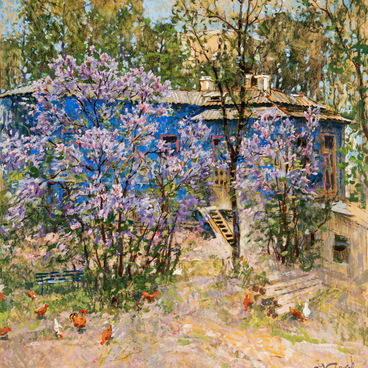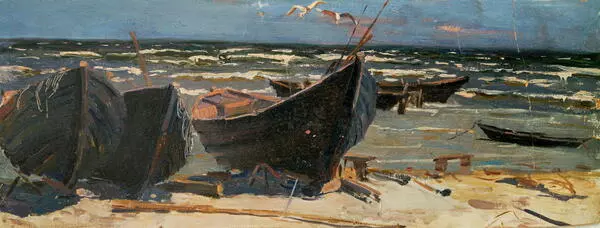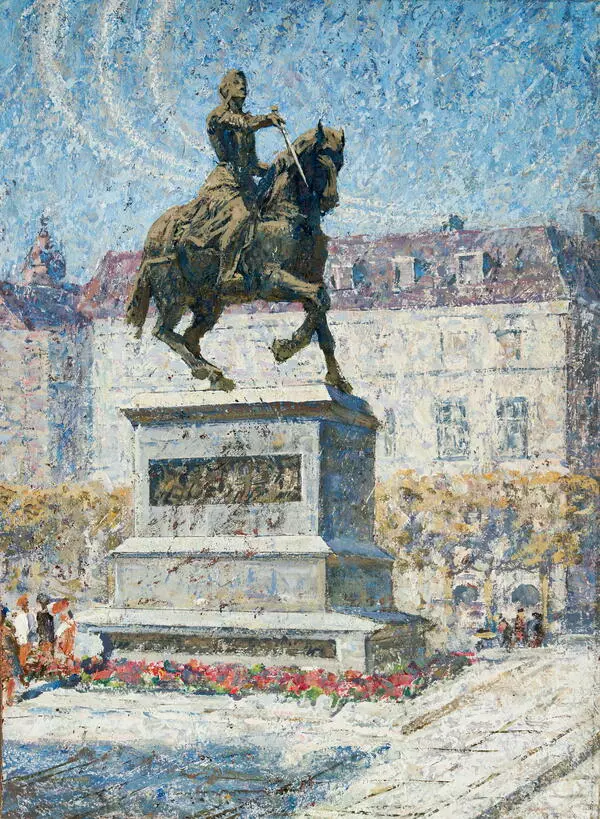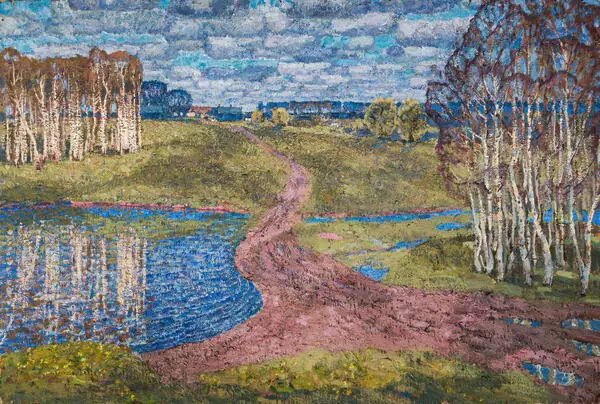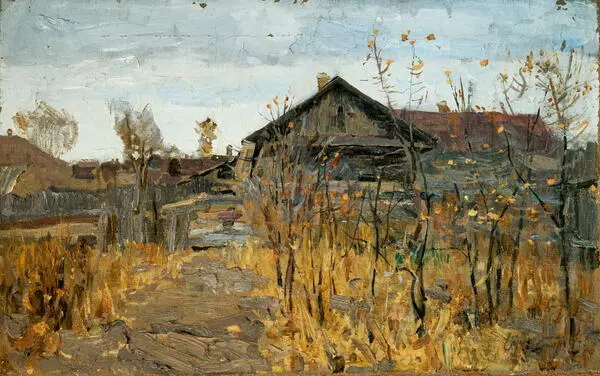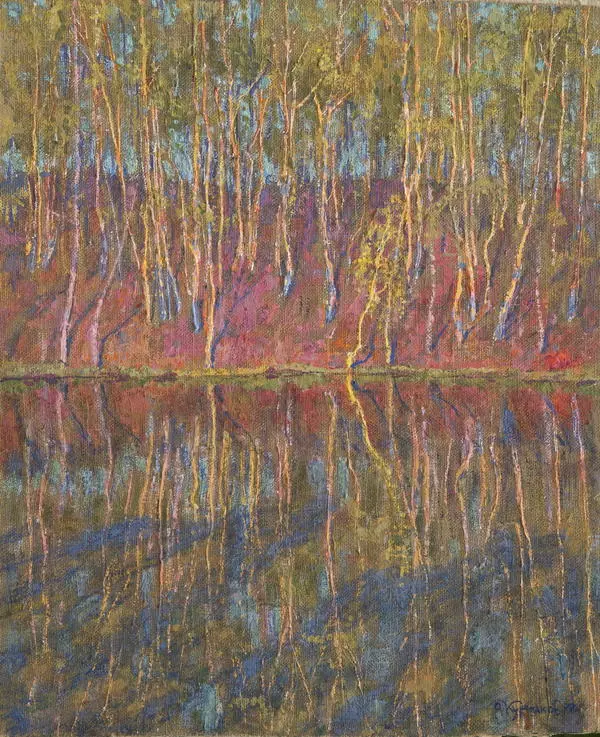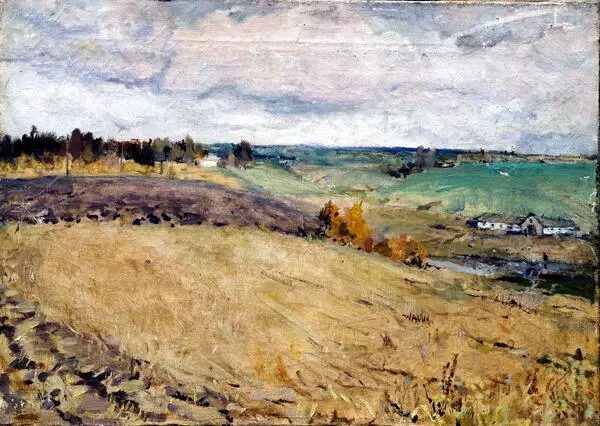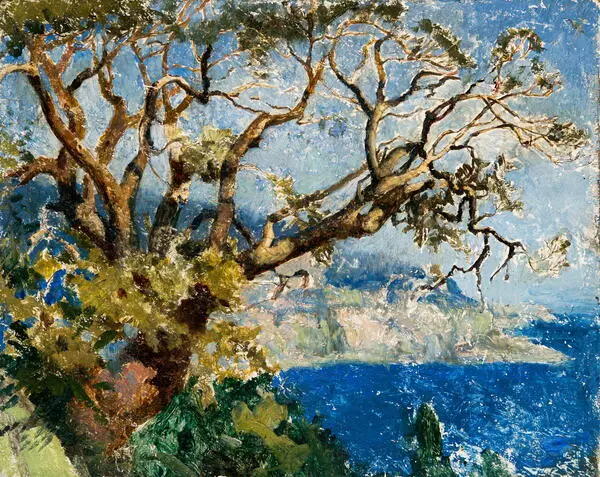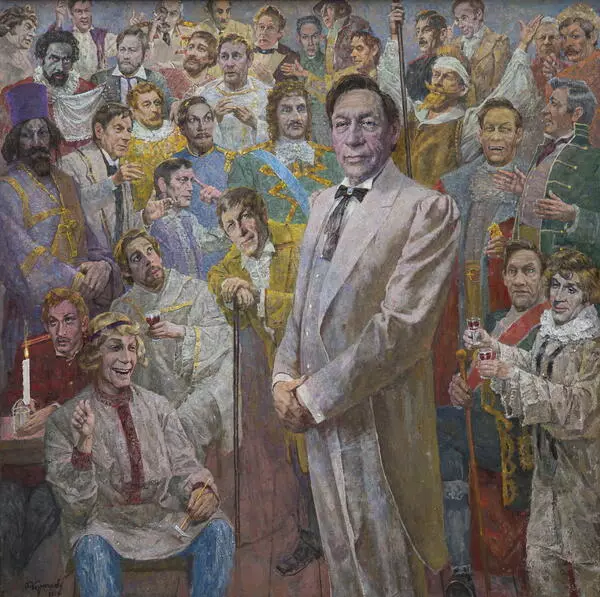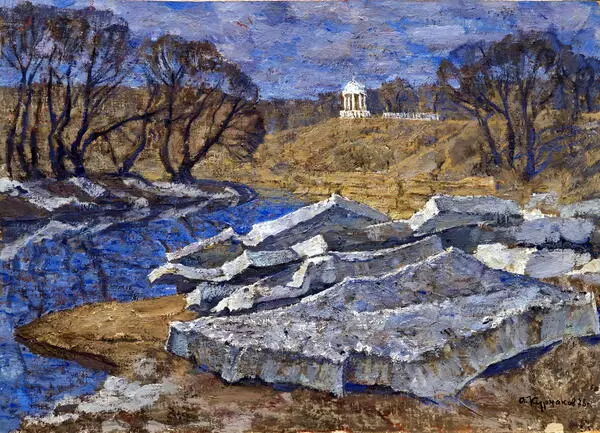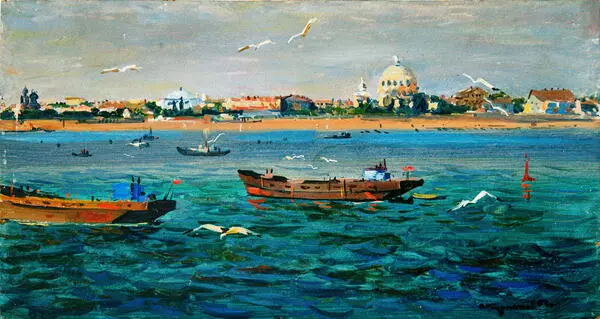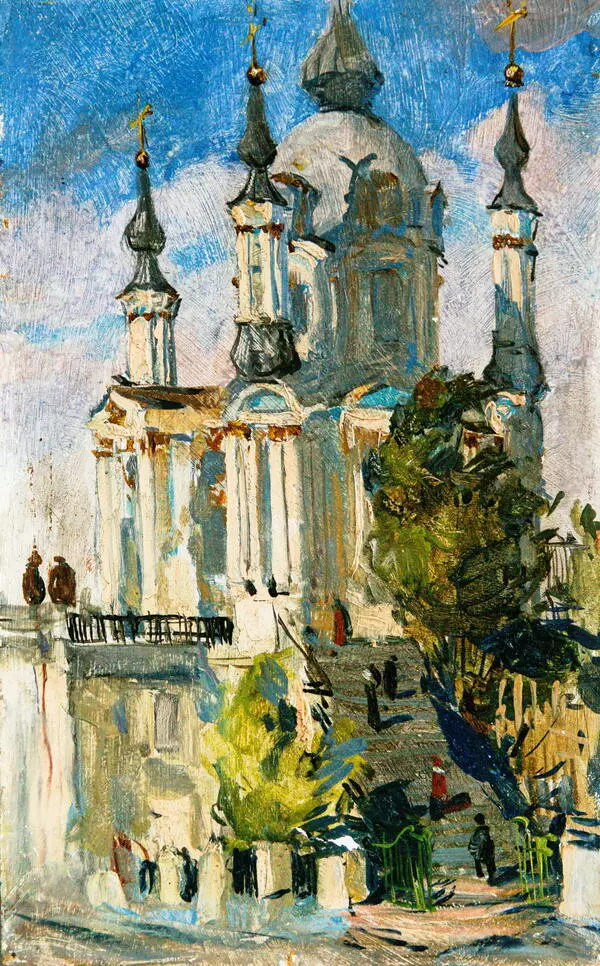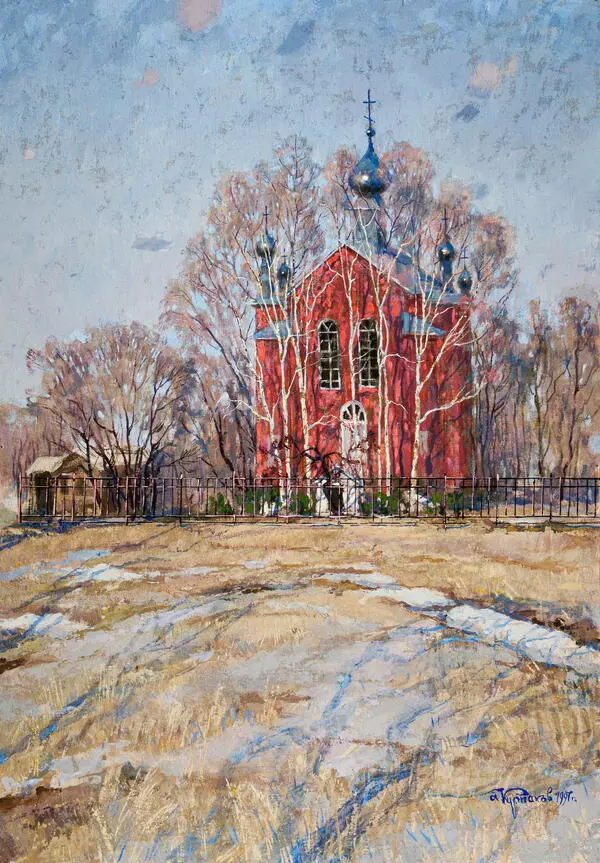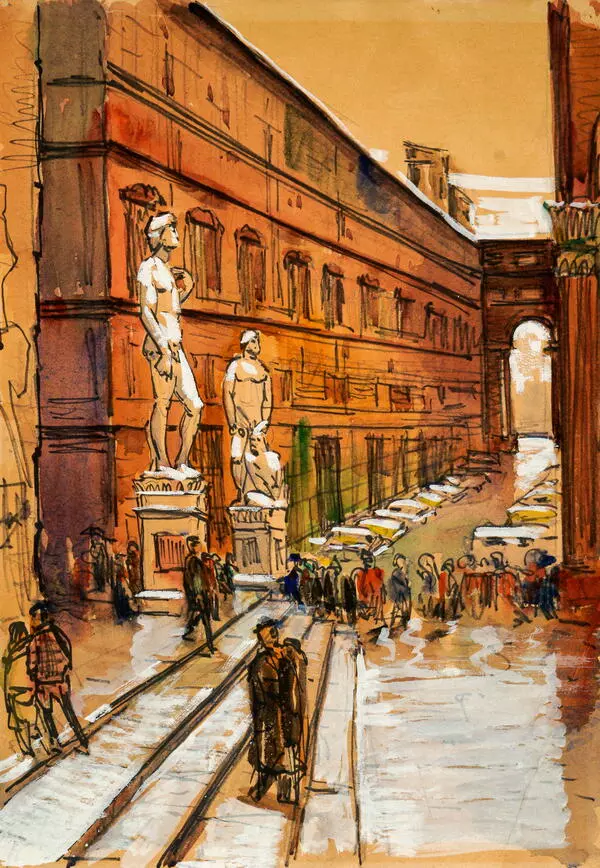Andrey Ilyich Kurnakov loved picturing autumn — for him it was the brightest and dearest season. His tender attitude to autumn is expressed through a vivid, rich, and lively palette. Red-yellow, golden, orange, and ochre warm colors of the beautiful Indian summer season create a special atmosphere in the works of the Oryol painter.
Kurnakov portrays a slightly nostalgic and touching landscape of true Russian nature with all its richness and grandeur. He depicts a yard in front of his studio on a warm autumn day. It seems as if the artist wants to reflect everything dear to his heart in one painting. That could explain why he slightly distorts the perspective and makes changes to the existing composition and arrangement of objects in his yard in Oryol.
The road that is supposed to be near the old house is not here. The objects are placed closer to each other than in real life. The artist forgoes photographic accuracy for the sake of conveying the ambiance, feelings, and emotions.
The sky in the background has no ounce of blue in it, instead, it is off-white, illuminated with soft rays of the pink sun. But the artist still wanted the blue color in the painting, so he placed an old blue house in the depths. Behind the house is a mighty linden with a thin lace of branches that have already shredded their leaves. The wide foreground, which is often found in Kurnakov’s landscapes, depicts an old birch tree with all its fabulous autumn foliage. The artist fondly and meticulously outlines a slightly bent trunk and lowered thin branches with golden leaves.
Beautiful bright clusters of a young rowan tree bring joy to the scene. This delightful image came straight from the artist’s imagination. In reality, there was no rowan in Kurnakov’s yard, but the artist used it nonetheless to create the ambiance he needed.
Chickens pace the yard, clean laundry dries on a rope stretched between the trees. The artist makes the image seem mundane on purpose: he finds ordinary everyday life beautiful and strives to make the viewers see that as well. Kurnakov was born in autumn and painted the season quite often. Now and then his landscapes depict that slumberous, quiet state of nature usually found at the end of summer or shortly before winter. For him, autumn was about reflection and inspiration, and it was his most productive time of the year.
Kurnakov portrays a slightly nostalgic and touching landscape of true Russian nature with all its richness and grandeur. He depicts a yard in front of his studio on a warm autumn day. It seems as if the artist wants to reflect everything dear to his heart in one painting. That could explain why he slightly distorts the perspective and makes changes to the existing composition and arrangement of objects in his yard in Oryol.
The road that is supposed to be near the old house is not here. The objects are placed closer to each other than in real life. The artist forgoes photographic accuracy for the sake of conveying the ambiance, feelings, and emotions.
The sky in the background has no ounce of blue in it, instead, it is off-white, illuminated with soft rays of the pink sun. But the artist still wanted the blue color in the painting, so he placed an old blue house in the depths. Behind the house is a mighty linden with a thin lace of branches that have already shredded their leaves. The wide foreground, which is often found in Kurnakov’s landscapes, depicts an old birch tree with all its fabulous autumn foliage. The artist fondly and meticulously outlines a slightly bent trunk and lowered thin branches with golden leaves.
Beautiful bright clusters of a young rowan tree bring joy to the scene. This delightful image came straight from the artist’s imagination. In reality, there was no rowan in Kurnakov’s yard, but the artist used it nonetheless to create the ambiance he needed.
Chickens pace the yard, clean laundry dries on a rope stretched between the trees. The artist makes the image seem mundane on purpose: he finds ordinary everyday life beautiful and strives to make the viewers see that as well. Kurnakov was born in autumn and painted the season quite often. Now and then his landscapes depict that slumberous, quiet state of nature usually found at the end of summer or shortly before winter. For him, autumn was about reflection and inspiration, and it was his most productive time of the year.

